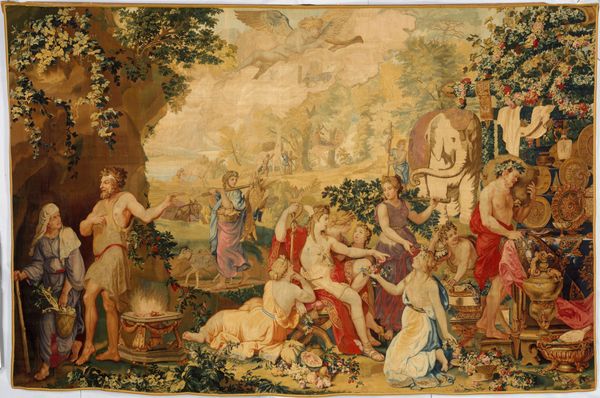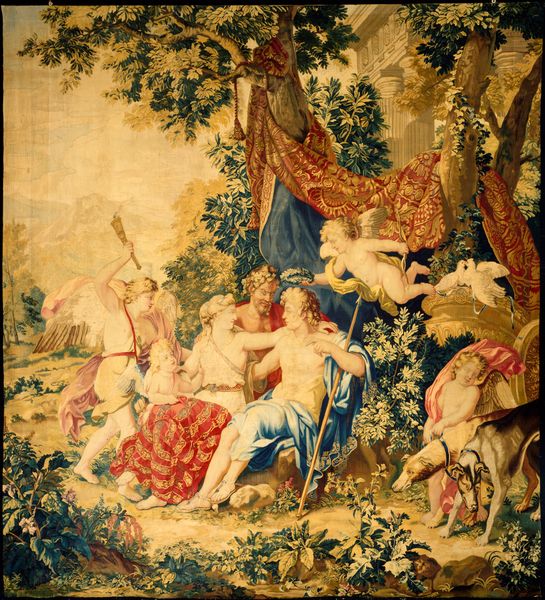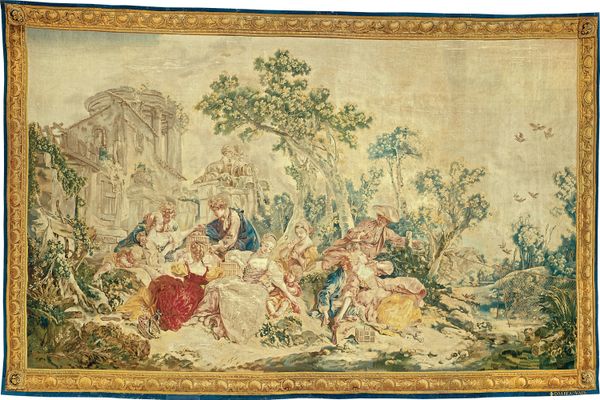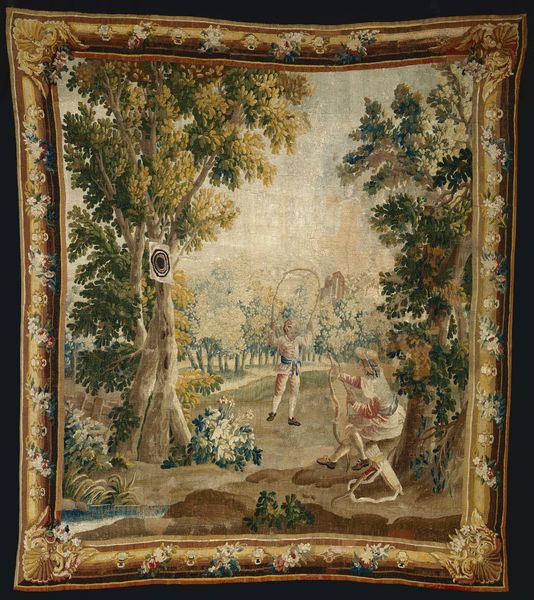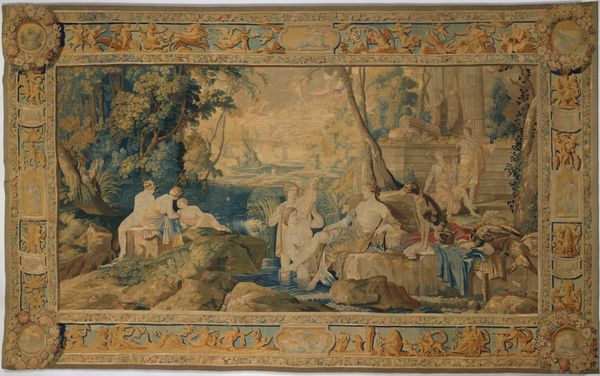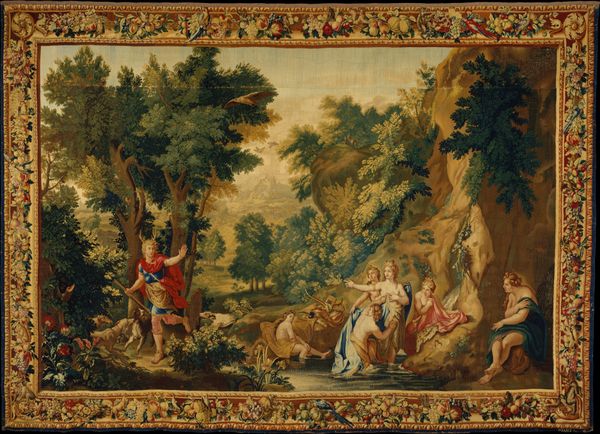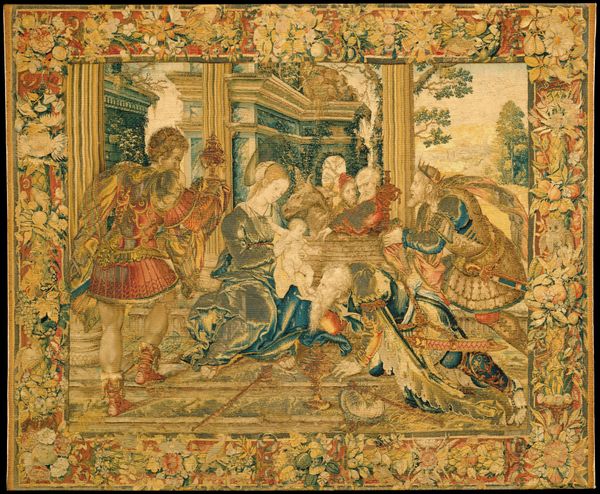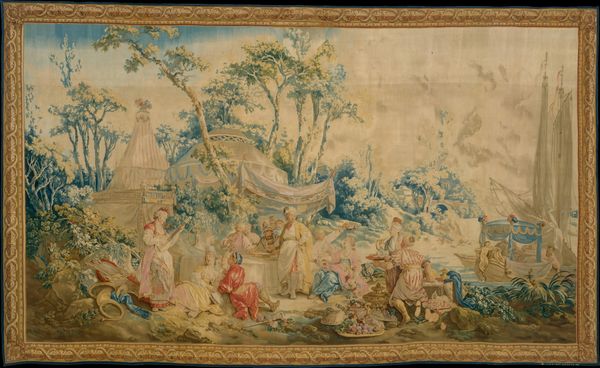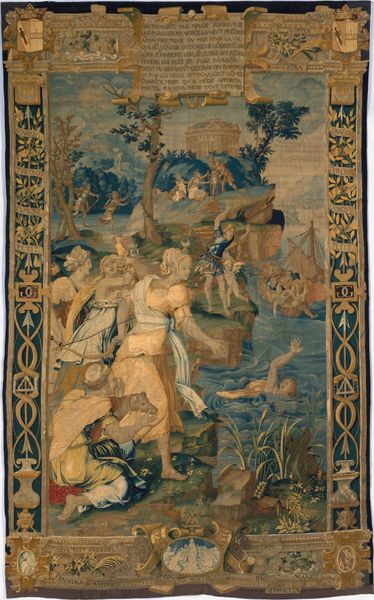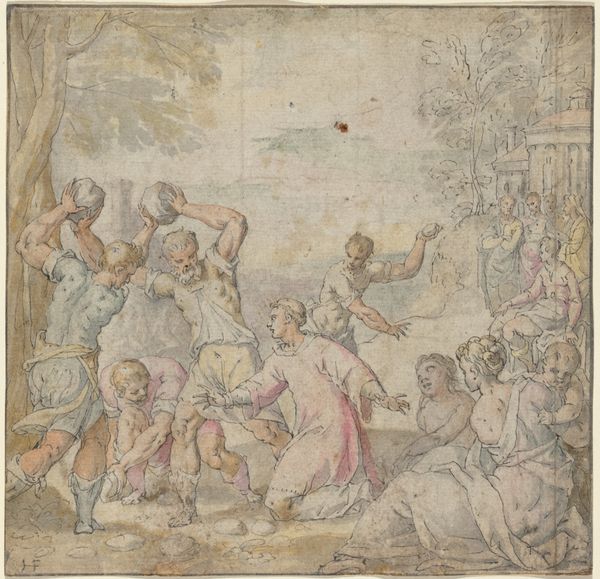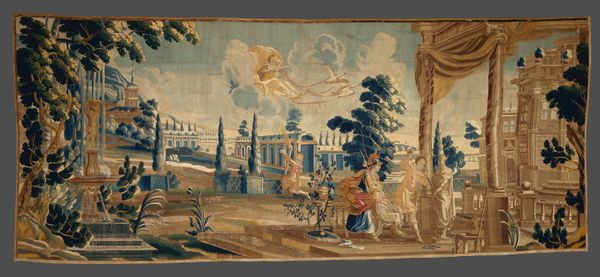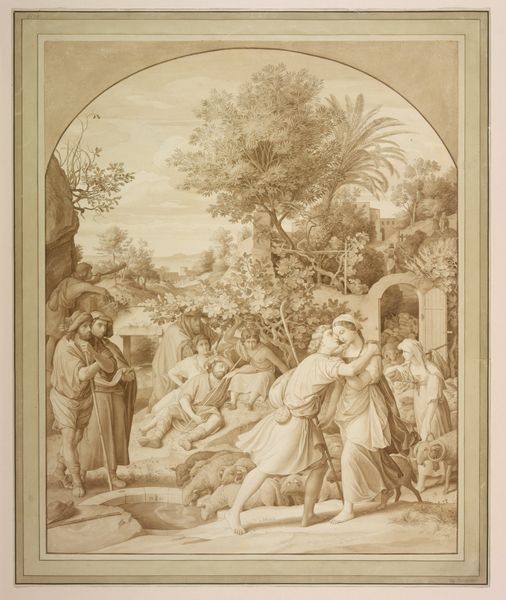
The Collation from a set of the Italian Village Scenes 1734 - 1762
0:00
0:00
painting, oil-paint, textile, ink
#
painting
#
oil-paint
#
landscape
#
textile
#
figuration
#
oil painting
#
ink
#
genre-painting
#
decorative-art
#
rococo
Dimensions: 10 ft. 10 in. × 8 ft. 6 in. (330.2 × 259.1 cm)
Copyright: Public Domain
Curator: Here we have "The Collation from a set of the Italian Village Scenes," a tapestry conceived by François Boucher between 1734 and 1762, now residing here at The Metropolitan Museum of Art. It is quite an imposing scene, isn't it? Editor: It’s true—immediately striking in scale and technique. The soft palette, combined with the detailed figuration, presents this pastoral scene as undeniably idyllic. But at the same time I am thinking about all of the labor needed to create it, how did it work? Curator: Indeed, the weave itself is a sophisticated technical achievement. Boucher's composition employs an exquisite deployment of asymmetry; see how the figures aren't evenly distributed, leading your eye across the plane. The artist carefully structured space and activated narrative flow. What do you make of its Rococo features? Editor: I see the hallmarks, for sure— the playful subject, soft palette. I wonder what kind of factory was responsible for making such a huge tapestry? Tapestries like this really speak to consumption and the vast production that went into decorative programs for elites. Who were the weavers? What were their working conditions like? Curator: Of course. The scene is self-contained with little reference beyond its idealized frame. The gentle undulations in the trees and the fabrics and figures reflect an engagement with line and texture that amplifies the sensuous surface. Editor: It’s quite the formal juxtaposition—this highly formalized and very intentional artistic creation depicts a scene of pastoral leisure and purported "naturalness." Where was it intended to be hung, perhaps to amplify its commissioners own place in a similar scene? Curator: Perhaps so. The work encapsulates a particular visual grammar that elevates artifice. The interplay of color and composition certainly constructs a distinct perspective that reflects the values of the Rococo. Editor: Agreed. Seeing the work lets me think through this complex relationship between idyllic subject matter and the socio-economic conditions necessary for its material realization, a fascinating entanglement! Curator: I wholeheartedly concur; it is indeed a window into the elaborate modes of visual representation that reigned during that era.
Comments
No comments
Be the first to comment and join the conversation on the ultimate creative platform.
